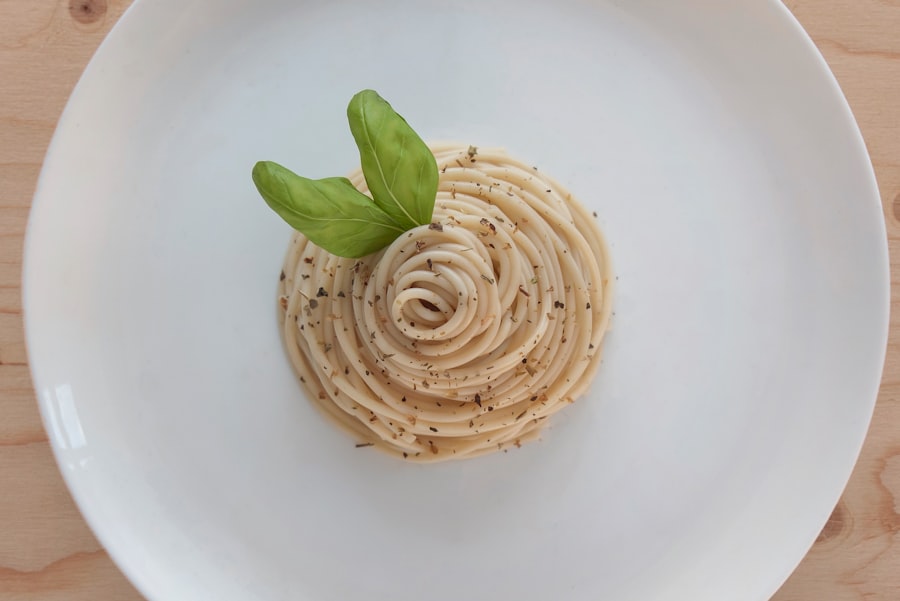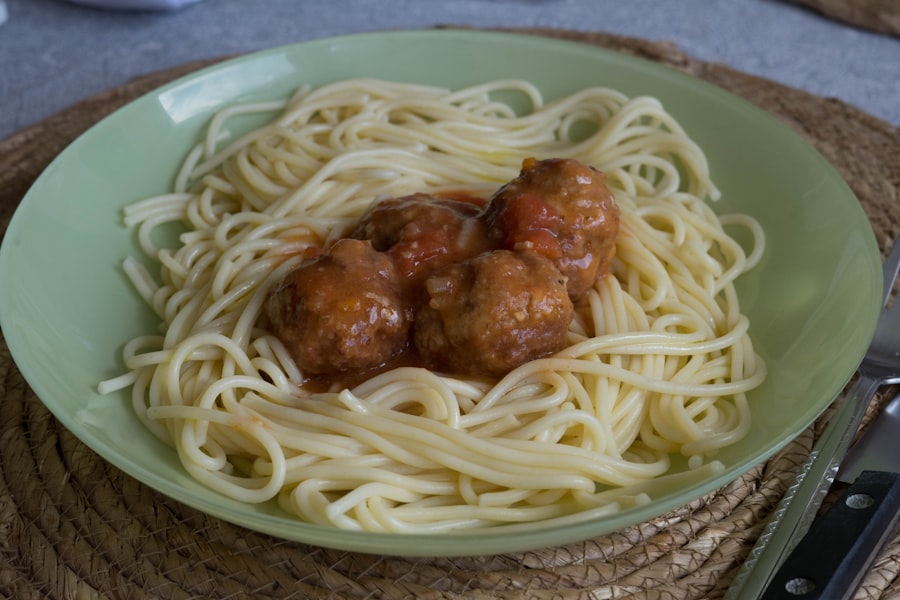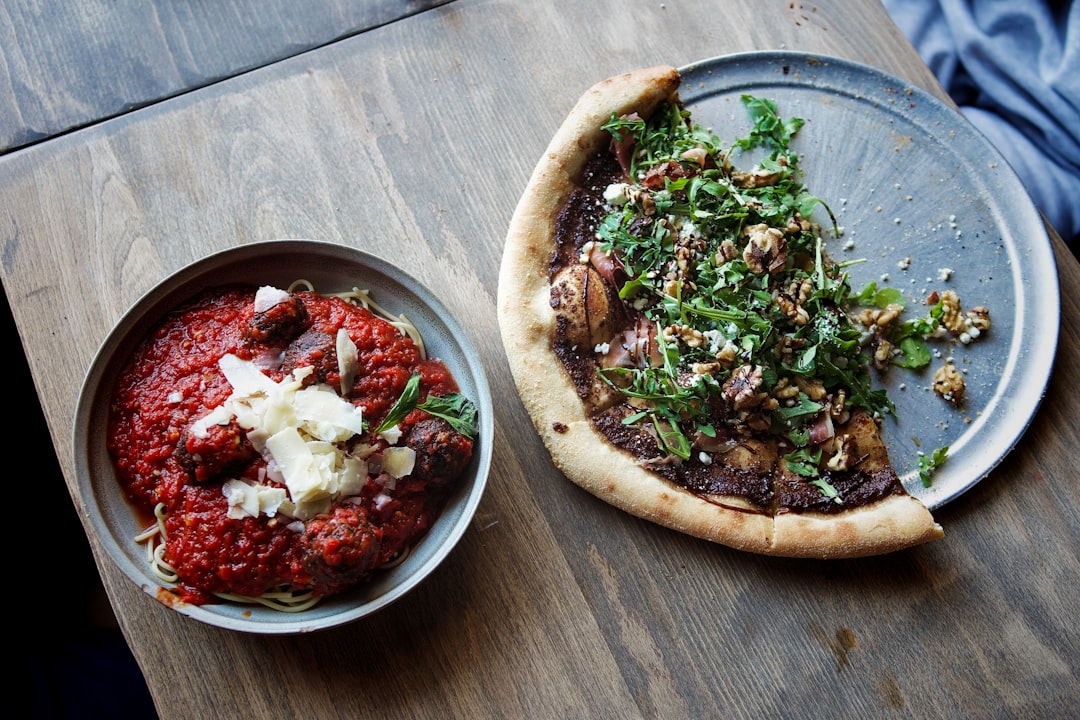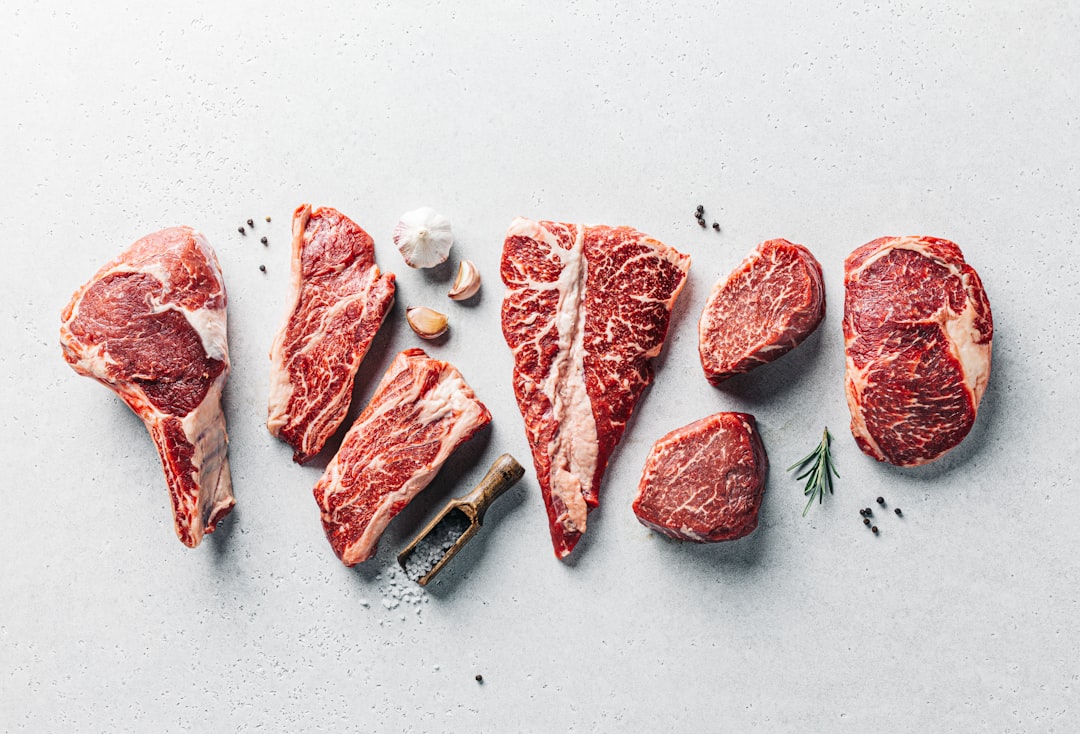The origins of pasta are steeped in a rich tapestry of history that spans centuries and continents. While many associate pasta with Italy, its roots can be traced back to ancient civilizations. The earliest known reference to a noodle-like food dates back to the Etruscans, who inhabited Italy around 400 B.Archaeological findings suggest that they made a type of dough from wheat and water, which they then shaped and cooked.
However, it was the introduction of durum wheat by the Arabs in the 8th century that significantly influenced the development of pasta as we know it today. This hard wheat variety, rich in gluten, allowed for the creation of a firmer and more versatile product. As pasta evolved, it became a staple in various regions of Italy, each developing its unique styles and shapes.
By the 12th century, pasta was being produced commercially in Sicily, and by the 14th century, it had spread throughout the Italian peninsula. The first documented recipe for pasta appears in a cookbook from the 14th century, “Liber de Coquina,” which highlights the growing popularity of this dish. The Renaissance period further propelled pasta into the culinary spotlight, with its inclusion in royal banquets and its association with Italian culture.
By the 19th century, pasta had become a symbol of Italian identity, leading to its global spread as Italian immigrants carried their culinary traditions to new lands.
Key Takeaways
- Pasta originated in Italy and has a rich history dating back to ancient times.
- There are numerous types of pasta, from long and thin spaghetti to short and tubular penne.
- Making fresh pasta involves a few simple ingredients and a step-by-step process that anyone can master.
- Regional Italian pasta dishes showcase the diverse flavors and ingredients found throughout Italy.
- Pasta has become a global staple, with each culture adapting it to their own culinary traditions.
The Different Types of Pasta: From Penne to Pappardelle
Pasta comes in an astonishing variety of shapes and sizes, each designed to complement specific sauces and dishes. Among the most recognizable types is penne, characterized by its tubular shape and diagonal cut ends. This pasta is particularly adept at holding onto sauces, making it a popular choice for baked dishes like penne alla vodka or creamy Alfredo sauces.
Another beloved shape is farfalle, often referred to as “bow-tie” pasta due to its distinctive form. Farfalle is versatile and works well in both light salads and hearty casseroles. Pappardelle, on the other hand, is a wide ribbon-like pasta that hails from Tuscany.
Its broad surface area makes it ideal for rich, meaty sauces such as ragu or wild boar sauce. Similarly, tagliatelle, which is slightly thinner than pappardelle, is often paired with traditional Bolognese sauce. Each type of pasta not only serves a functional purpose but also contributes to the overall dining experience through its texture and ability to absorb flavors.
Understanding these distinctions allows cooks to create dishes that are not only delicious but also visually appealing.
The Art of Making Fresh Pasta: A Step-by-Step Guide

Creating fresh pasta from scratch is an art form that requires practice and precision but rewards with unparalleled flavor and texture. The process begins with selecting high-quality ingredients: flour, eggs, and a pinch of salt. The most commonly used flour for pasta is “00” flour, which is finely milled and has a high protein content, resulting in a smooth dough.
To start, mound the flour on a clean surface and create a well in the center. Crack the eggs into this well and sprinkle salt over them. Using a fork, gently beat the eggs while gradually incorporating the flour from the edges of the well.
Once the mixture becomes too thick to mix with a fork, use your hands to knead the dough until it becomes smooth and elastic—this usually takes about 8-10 minutes. After kneading, wrap the dough in plastic wrap and let it rest for at least 30 minutes; this allows the gluten to relax, making it easier to roll out later. Once rested, divide the dough into smaller portions for easier handling.
Using a rolling pin or a pasta machine, roll out each portion into thin sheets. The thickness can vary depending on personal preference and the type of pasta being made. For shapes like fettuccine or lasagna, aim for a thickness of about 1/16 inch.
After rolling out the dough, cut it into your desired shape—whether it’s long ribbons or small squares for ravioli. Dust the cut pasta with flour to prevent sticking before cooking it in boiling salted water for just a few minutes until al dente.
Exploring Regional Italian Pasta Dishes: From Sicilian Caponata to Roman Cacio e Pepe
| Pasta Dish | Region | Main Ingredients |
|---|---|---|
| Caponata | Sicily | Eggplant, tomatoes, celery, olives, capers |
| Cacio e Pepe | Rome | Pecorino cheese, black pepper |
| Linguine alle Vongole | Naples | Linguine, clams, garlic, white wine, parsley |
| Pasta alla Norma | Sicily | Tomatoes, eggplant, ricotta salata cheese |
Italy’s diverse regions boast an array of traditional pasta dishes that reflect local ingredients and culinary customs. In Sicily, caponata—a sweet and sour eggplant dish—often serves as a vibrant accompaniment to pasta. This dish combines eggplant with tomatoes, olives, capers, and vinegar, creating a complex flavor profile that pairs beautifully with short pasta shapes like orecchiette or rigatoni.
The use of seasonal vegetables highlights Sicily’s agricultural bounty and showcases how regional produce can elevate simple pasta dishes. In contrast, Roman cuisine offers iconic dishes such as Cacio e Pepe, which translates to “cheese and pepper.” This minimalist dish relies on just three ingredients: spaghetti or tonnarelli, Pecorino Romano cheese, and freshly cracked black pepper. The key to achieving the perfect Cacio e Pepe lies in emulsifying the cheese with starchy pasta water to create a creamy sauce that clings to each strand of pasta.
This dish exemplifies how simplicity can yield extraordinary flavors when executed with care.
The Global Influence of Pasta: How it’s Adapted in Different Cuisines
Pasta’s adaptability has allowed it to transcend cultural boundaries and integrate into various global cuisines. In Japan, for instance, ramen noodles have become synonymous with comfort food. Made from wheat flour, water, salt, and kansui (an alkaline mineral water), ramen noodles are characterized by their chewy texture and ability to absorb rich broths.
The dish has evolved into numerous regional varieties across Japan, each showcasing unique flavors and toppings. Similarly, in China, noodles play an integral role in culinary traditions. Dishes like chow mein and lo mein feature wheat-based noodles stir-fried with vegetables and proteins, demonstrating how pasta can be adapted to local tastes and cooking methods.
In both cases, these adaptations highlight how pasta can serve as a canvas for diverse flavors while maintaining its core identity as a staple carbohydrate.
Pairing Pasta with the Perfect Sauce: A Match Made in Culinary Heaven

The relationship between pasta and sauce is fundamental to Italian cuisine; each type of pasta has its ideal sauce counterpart that enhances its flavor profile. For instance, delicate shapes like angel hair are best paired with light sauces such as olive oil or fresh tomato sauce that won’t overwhelm their subtle texture. Conversely, robust shapes like rigatoni or ziti are well-suited for hearty meat sauces or creamy Alfredo sauces that cling well to their ridges.
When considering sauce pairings, one must also take into account regional traditions. In Northern Italy, creamy sauces made with butter and cheese are prevalent due to the colder climate and dairy-rich agriculture. In contrast, Southern Italy favors tomato-based sauces that highlight fresh vegetables and seafood—reflecting the region’s Mediterranean climate and agricultural practices.
Understanding these nuances not only enhances one’s culinary repertoire but also deepens appreciation for Italy’s rich gastronomic heritage.
Pasta Shapes and Textures: Understanding the Role of Form in Flavor
The shape of pasta plays a crucial role in determining how it interacts with sauces and other ingredients on the plate. For example, tubular pastas like cannelloni or manicotti are designed to be stuffed with fillings such as ricotta cheese or meat mixtures before being baked in sauce—a technique that showcases their structural integrity. Similarly, shapes like fusilli or rotini have spirals that trap bits of sauce and ingredients within their grooves, ensuring each bite is flavorful.
Flat pastas like lasagna sheets or pappardelle offer a different experience; their broad surfaces allow for generous layers of sauce or fillings that create satisfying textures when layered or rolled. The choice of pasta shape can also influence cooking times; thinner pastas cook more quickly than thicker varieties, which require longer boiling times to achieve the desired al dente texture. This understanding of form not only enhances culinary creativity but also elevates the overall dining experience.
The Health Benefits of Pasta: Debunking the Myths
Pasta has often been misunderstood in discussions about healthy eating; however, when consumed mindfully as part of a balanced diet, it can offer several health benefits. Whole grain pasta varieties are rich in fiber, which aids digestion and promotes satiety—helping individuals feel fuller for longer periods. Additionally, whole grain options contain essential nutrients such as B vitamins and iron that contribute to overall health.
Moreover, pasta can serve as an excellent source of energy due to its carbohydrate content—making it an ideal choice for athletes or those engaging in physical activity. When paired with nutrient-dense ingredients like vegetables, lean proteins, and healthy fats, pasta dishes can provide a well-rounded meal that supports various dietary needs. By debunking myths surrounding pasta’s role in weight gain or unhealthy eating habits, individuals can enjoy this beloved food without guilt while embracing its nutritional value.
Pasta in Popular Culture: From Lady and the Tramp to The Godfather
Pasta has made significant appearances in popular culture, often symbolizing comfort food or familial bonds within cinematic narratives. One of the most iconic scenes featuring pasta occurs in Disney’s “Lady and the Tramp,” where two dogs share a plate of spaghetti while simultaneously slurping up a noodle—culminating in an unexpected kiss. This romantic portrayal has cemented spaghetti as a symbol of love and connection in popular culture.
In contrast, “The Godfather” presents a different perspective on Italian-American culture through its depiction of family gatherings centered around food—particularly pasta dishes served during pivotal moments in the film. These portrayals highlight how food serves as a cultural touchstone that brings people together while also reflecting broader themes of identity and tradition within Italian-American communities.
Pasta Etiquette: The Do’s and Don’ts of Eating Pasta
Understanding proper etiquette when consuming pasta can enhance both personal enjoyment and social dining experiences. One fundamental rule is to avoid cutting long strands of pasta like spaghetti; instead, twirling them around a fork is considered more appropriate. This technique not only preserves the integrity of the dish but also allows diners to savor each bite fully.
Another common misconception involves using a spoon as an aid while twirling spaghetti; while some cultures may accept this practice, it is generally frowned upon in traditional Italian dining settings. Additionally, when it comes to sauces—especially those that are chunky—it’s advisable to use shapes that can hold onto these ingredients rather than attempting to scoop them up with flat pastas like lasagna sheets or tagliatelle.
The Future of Pasta: Innovations and Trends in the Culinary World
As culinary trends continue to evolve, so too does the world of pasta—embracing innovations that cater to changing dietary preferences and lifestyles. One notable trend is the rise of alternative flours used in pasta production; options such as chickpea flour or lentil flour have gained popularity among those seeking gluten-free alternatives without sacrificing flavor or texture. Additionally, plant-based diets have influenced how chefs approach traditional recipes; many are experimenting with vegetable-infused pastas that incorporate pureed spinach or beetroot into their doughs—resulting in vibrant colors and added nutrients.
These innovations reflect a growing awareness of health-conscious eating while maintaining respect for traditional techniques. Furthermore, sustainability has become an essential consideration within the culinary landscape; many producers are focusing on sourcing ingredients locally or adopting eco-friendly practices in their production processes—ensuring that future generations can continue enjoying this beloved staple without compromising environmental integrity. Through these innovations and trends, pasta remains not only a beloved comfort food but also an evolving canvas for culinary creativity that reflects contemporary values while honoring its rich history.



